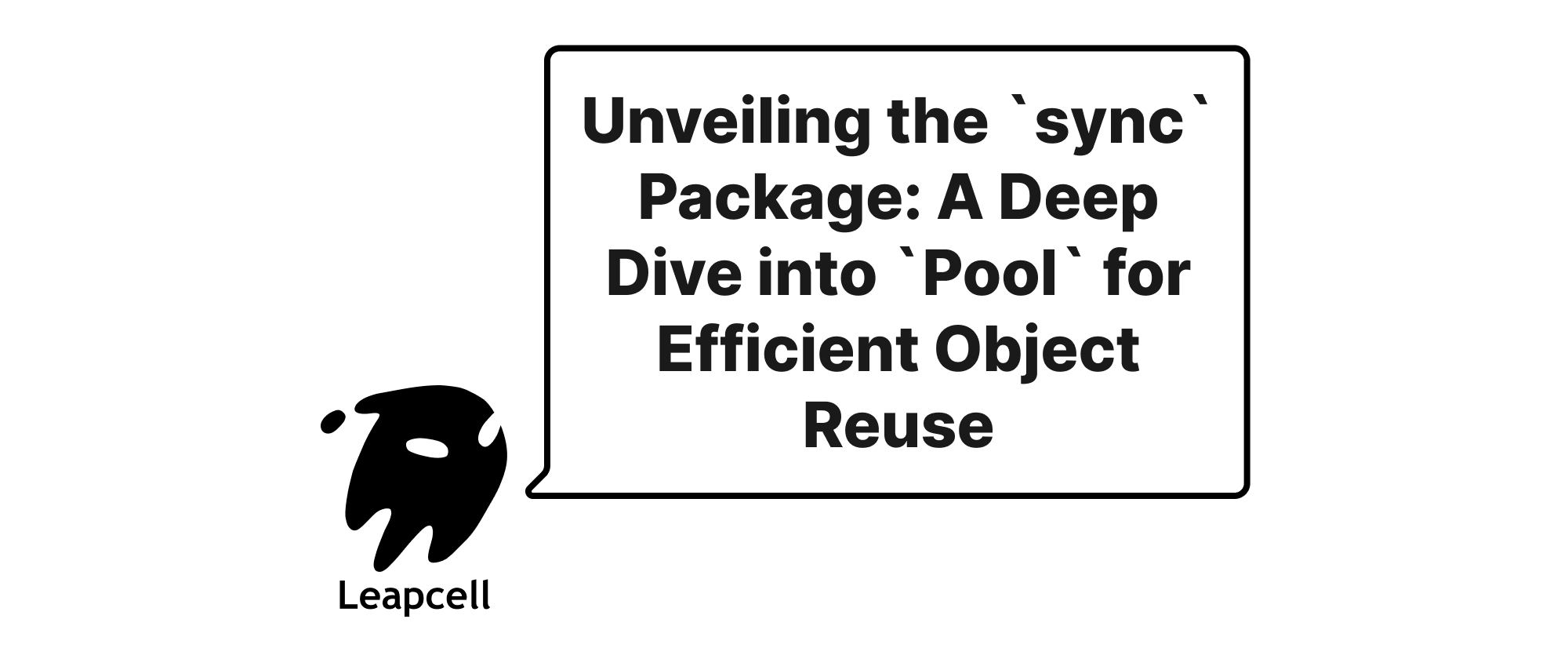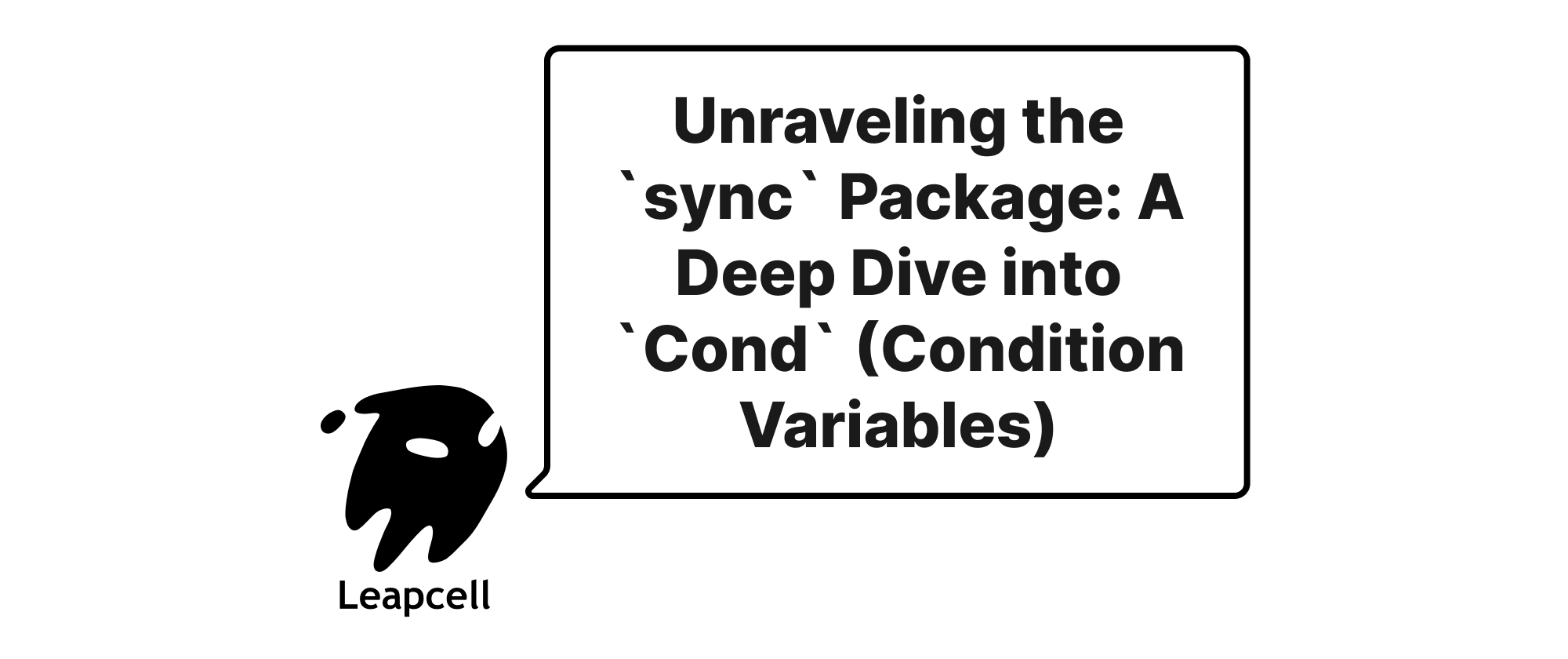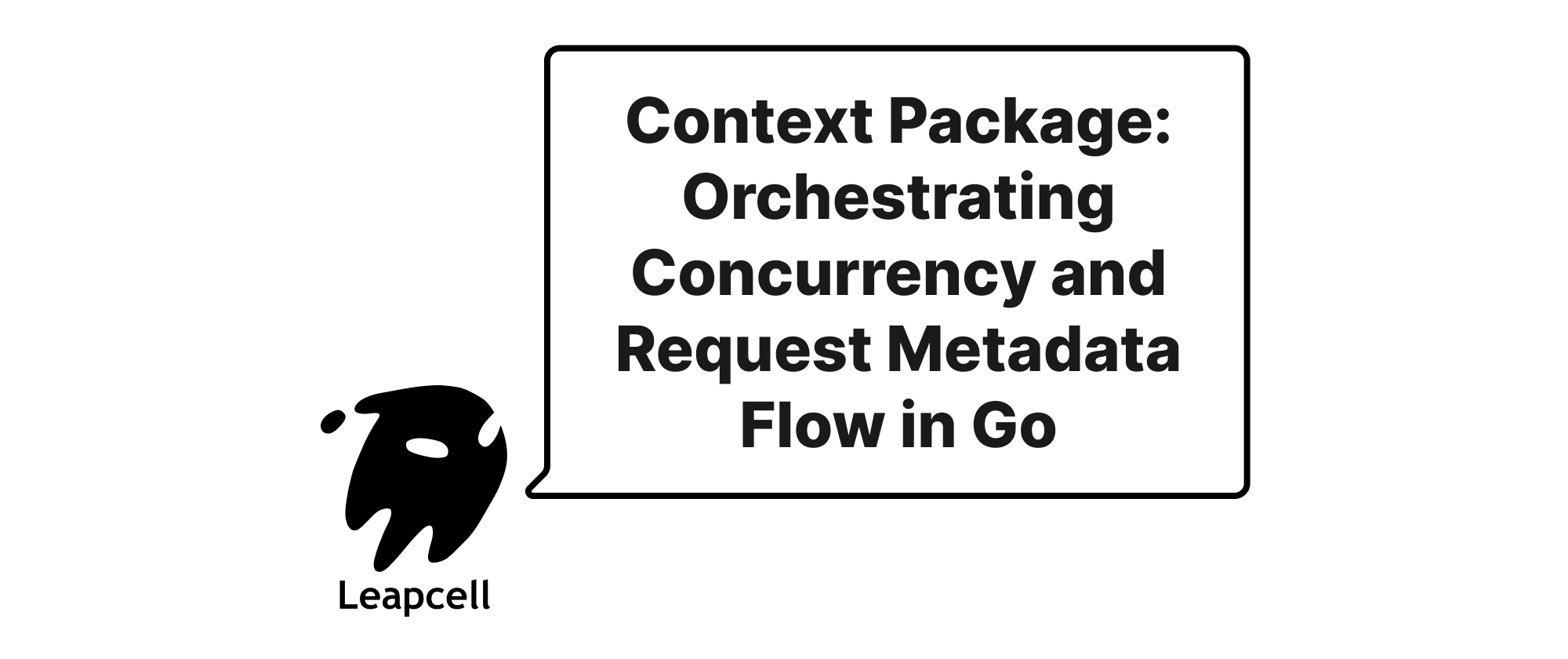Unlocking Efficiency: Demystifying Go's `sync.Pool` for Ephemeral Objects
Takashi Yamamoto
Infrastructure Engineer · Leapcell

Go's sync.Pool is a fascinating and often powerful component of its standard library, designed to help optimize performance by reducing garbage collection pressure. While its name might suggest a general-purpose object pool, its specific design and most effective use case revolve around the reuse of temporary, ephemeral objects. This article will delve into the intricacies of sync.Pool, explaining its mechanics, demonstrating its use with practical examples, and discussing its benefits and potential pitfalls.
The Problem: Churning Temporary Objects
In many Go applications, especially those dealing with high-throughput network services, parsers, or data processing, a common pattern emerges: you frequently create small, temporary objects (like bytes.Buffer, []byte slices, or custom structs) that are used for a short duration and then discarded.
Consider a web server that receives JSON requests. For each request, it might:
- Allocate a
[]byteslice to read the request body. - Allocate a
bytes.Bufferto build a response payload. - Allocate a struct to unmarshal the incoming JSON.
If these operations happen thousands of times per second, the Go runtime's garbage collector (GC) will be constantly busy reclaiming these short-lived objects. While Go's GC is highly optimized, frequent allocation and deallocation still impose a cost in terms of CPU cycles and potential latency spikes as the GC performs its work.
The Solution: sync.Pool - A Cache for Ephemeral Objects
sync.Pool is not a general-purpose object pool in the sense that you'd use it to manage connections to a database or a pool of goroutines. Instead, it's a concurrently safe, per-processor cache of reusable objects. Its primary goal is to reduce allocation pressure on the garbage collector by allowing temporary objects to be put back into a "pool" for later reuse, rather than being immediately discarded and garbage collected.
How sync.Pool Works
At its core, sync.Pool manages a collection of objects that can be put into the pool and gotten from it.
-
func (p *Pool) Get() interface{}: When you callGet(), the pool first attempts to retrieve a previously stored object.- It checks a per-processor (P) local cache. This is the fastest path, as it avoids locking and cache contention.
- If the local cache is empty, it then tries to steal an object from another processor's local cache.
- If no objects are available in any local caches, it checks a shared global list.
- If the pool is still empty,
Get()calls theNewfunction (provided duringsync.Poolinitialization) to create a new object. This new object is then returned.
-
func (p *Pool) Put(x interface{}): When you callPut(x), you return an objectxto the pool.- The object is added to the current processor's local cache. This is generally very fast.
- Note that
Put(nil)has no effect.
Key Characteristics and Considerations
- Temporary Objects Only:
sync.Poolis designed for objects that are temporary and can be safely reset or re-initialized before reuse. It's not for objects that hold persistent state or require careful lifecycle management (e.g., database connections). - Per-Processor Caching:
sync.Poolmaintains per-processor local caches, which significantly reduces contention in highly concurrent scenarios. This is crucial for performance. - GC Interaction: This is the most crucial, and often misunderstood, aspect. Objects in
sync.Poolcan be garbage collected at any point. Specifically, the pool is designed to be cleared out during garbage collection cycles (GC sweep phase). This means that if the GC runs, objects that were put back into the pool might be discarded to free up memory.- This is why
sync.Poolis effective for temporary objects: you shouldn't rely onsync.Poolto always have an object ready, nor should you expect an object youPutto persist indefinitely. IfGet()returns anil(or you check for it and handle it), theNewfunction will be called. - This behavior allows
sync.Poolto adapt to memory pressure. If memory is tight, the GC can reclaim pooled objects. If memory is plentiful, objects can remain in the pool for longer.
- This is why
NewFunction: TheNewfield (a function that returnsinterface{}) is called byGet()if no object is available in the pool. This is where you define how a new object is created.- No Size Limit:
sync.Pooldoes not have a fixed size limit. It grows as needed.
Practical Examples
Let's illustrate sync.Pool with some common scenarios.
Example 1: Reusing bytes.Buffer
bytes.Buffer is a classic candidate for pooling. It's frequently used to build strings or byte slices efficiently, but each bytes.NewBuffer() allocates a new underlying byte slice.
package main import ( "bytes" "fmt" "io" "net/http" "sync" "time" ) // Define a sync.Pool for bytes.Buffer var bufferPool = sync.Pool{ New: func() interface{} { // New function is called if the pool is empty. // We pre-allocate a Bytes.Buffer with a reasonable initial capacity // to reduce reallocations during subsequent writes. return new(bytes.Buffer) // Or bytes.NewBuffer(make([]byte, 0, 1024)) }, } func handler(w http.ResponseWriter, r *http.Request) { // 1. Get a buffer from the pool // It's crucial to cast the interface{} type assertion. buf := bufferPool.Get().(*bytes.Buffer) // 2. IMPORTANT: Reset the buffer before use // Objects from the pool might contain stale data from previous uses. buf.Reset() // 3. Use the buffer (e.g., for building a response) fmt.Fprintf(buf, "Hello, you requested: %s\n", r.URL.Path) buf.WriteString("Current time: ") buf.WriteString(time.Now().Format(time.RFC3339)) buf.WriteString("\n") // Simulate some work time.Sleep(5 * time.Millisecond) // 4. Write the content to the response writer io.WriteString(w, buf.String()) // 5. Put the buffer back into the pool for reuse // This makes it available for the next request. bufferPool.Put(buf) } func main() { http.HandleFunc("/", handler) fmt.Println("Server listening on :8080") // Start an HTTP server http.ListenAndServe(":8080", nil) }
Key takeaways from this example:
Newfunction: We define how to create a newbytes.Bufferwhen the pool is empty.- Type Assertion:
pool.Get()returnsinterface{}, so you must perform a type assertion (.(*bytes.Buffer)) to use the object. Reset(): Crucially, you must reset the state of the object retrieved from the pool before using it. Withoutbuf.Reset(), you might be writing to a buffer that still contains data from a previous request, leading to incorrect responses or security vulnerabilities. Many pool-worthy objects (e.g.,*bytes.Buffer,[]byteslices) have aReset()or similar method for this purpose. For custom structs, you'd implement your own reset logic.
Example 2: Reusing Custom Structs
Imagine a parsing scenario where you frequently create temporary RequestData structs to hold parsed JSON, process them, and then discard them.
package main import ( "encoding/json" "fmt" "log" "sync" "time" ) // RequestData is a temporary struct that we want to reuse type RequestData struct { ID string `json:"id"` Payload string `json:"payload"` Timestamp int64 `json:"timestamp"` } // Reset method for our custom struct func (rd *RequestData) Reset() { rd.ID = "" rd.Payload = "" rd.Timestamp = 0 } var requestDataPool = sync.Pool{ New: func() interface{} { // New function to create a fresh RequestData struct fmt.Println("INFO: Creating a new RequestData object.") return &RequestData{} }, } func processRequest(jsonData []byte) (*RequestData, error) { // 1. Get a RequestData object from the pool data := requestDataPool.Get().(*RequestData) // 2. Reset its state before use data.Reset() // 3. Unmarshal JSON into the reused object err := json.Unmarshal(jsonData, data) if err != nil { // If unmarshalling fails, put it back *without* assuming it's valid // or if we decide not to use it further. requestDataPool.Put(data) return nil, fmt.Errorf("failed to unmarshal: %w", err) } // Simulate some processing time time.Sleep(10 * time.Millisecond) // In a real application, you'd do something with `data` log.Printf("Processed request ID: %s, Payload: %s", data.ID, data.Payload) // 4. Put the RequestData object back into the pool requestDataPool.Put(data) // We return a copy or an immutable representation if the caller needs to keep it, // because `data` is now back in the pool and might be reused by another goroutine. // For this example, we're assuming the caller only needs to know it was processed. return data, nil // Be careful with returning pooled objects. Often return *copy* if state needs to persist. } func main() { sampleJSON := []byte(`{"id": "req-123", "payload": "some important data", "timestamp": 1678886400}`) fmt.Println("Starting processing...") // Simulate multiple concurrent requests var wg sync.WaitGroup for i := 0; i < 50; i++ { wg.Add(1) go func(i int) { defer wg.Done() tempJSON := []byte(fmt.Sprintf(`{"id": "req-%d", "payload": "data-%d", "timestamp": %d}`, i, i, time.Now().Unix())) _, err := processRequest(tempJSON) if err != nil { log.Printf("Error processing %s: %v", string(tempJSON), err) } }(i) } wg.Wait() fmt.Println("Finished processing all requests.") // A short pause to let GC potentially run and clear the pool fmt.Println("\nWaiting for 3 seconds, GC might run...") time.Sleep(3 * time.Second) // Try getting another object. If GC ran, we might see "Creating a new RequestData object." again. fmt.Println("Attempting to get another object after a pause...") data := requestDataPool.Get().(*RequestData) data.Reset() // Always reset! fmt.Printf("Got object with ID: %s (should be empty for new/reset object)\n", data.ID) requestDataPool.Put(data) }
In this example:
- We define a
Reset()method forRequestDatato properly clear its fields. - The
Newfunction creates a pointer toRequestData. - You'll observe
INFO: Creating a new RequestData object.logs primarily at the beginning, and then only if the pool is exhausted or after a GC cycle.
When to Use sync.Pool
sync.Pool is best suited for:
- Frequently created, temporary objects: Objects that are allocated, used for a short period, and then no longer needed.
- Objects that are expensive to allocate/initialize: If the
Newfunction or the initial allocation takes a noticeable amount of time, pooling can avoid this cost. - Objects that can be easily reset: The
Reset()step must be cheap and effective. - High-throughput scenarios: The benefits are more pronounced under heavy load where GC pressure is a significant concern.
Common use cases include:
*bytes.Bufferinstances[]byteslices (e.g., for I/O buffers)- Temporary structs used for parsing or serialization.
- Intermediate data structures in algorithms.
When sync.Pool is NOT the Right Choice
sync.Pool is not a magic bullet. Avoid it for:
- Objects with persistent state: If an object holds state that needs to persist across uses without being explicitly managed, it's a poor candidate. The pool doesn't track object state.
- Objects that are rarely created: The overhead of
sync.Poolmanagement might outweigh the benefits if allocations are infrequent. - Objects that are expensive to
Reset(): If resetting an object is as costly as creating a new one, the benefit is diminished. - Managing long-lived resources: Don't use it for database connections, network connections, or goroutines. For these, use proper connection pools or worker pools.
- Smallest performance gains are negligible: Micro-optimizing with
sync.Poolwhen the bottleneck is elsewhere (e.g., network latency, database queries) is counterproductive. Always profile first!
Potential Pitfalls and Best Practices
- Always
Reset(): This is the cardinal rule. Failure to reset leads to data corruption, security issues, or subtle bugs. - Type Assertion: Remember
Get()returnsinterface{}, so you always need a type assertion. - GC Interaction Awareness: Understand that pooled objects can be collected. Do not build logic that assumes
Get()will always find a pre-existing object or that objects youPutwill remain in the pool indefinitely. - Ownership and Escaping: An object obtained from
sync.Poolis "owned" by the caller until it isPutback. If you return a pointer to a pooled object from a function, and that object is subsequentlyPutback into the pool while the caller still holds a reference, a race condition or use-after-free scenario can occur when another goroutine reuses the object. Always return a copy or ensure the pooled object isPutonly after all its potential consumers are done. - Concurrency Safet:
sync.Poolis thread-safe internally, but your usage of the pooled object must be. Put(nil)does nothing: Avoid puttingnilback into the pool.- Profile Before Optimizing: Like any optimization,
sync.Poolshould be used only after profiling identifies memory allocation and GC pressure as a bottleneck. Unnecessary use adds complexity without benefit.
Conclusion
sync.Pool is a powerful tool in a Go developer's arsenal for optimizing applications that deal with high rates of temporary object creation. By intelligently reusing these ephemeral objects, it can significantly reduce the load on the garbage collector, leading to lower CPU usage and more predictable latency. However, its effectiveness hinges on a clear understanding of its mechanics, especially its interaction with the garbage collector and the vital need to reset pooled objects. When used judiciously and correctly, sync.Pool can unlock substantial performance gains, allowing your Go applications to run more efficiently and smoothly.


